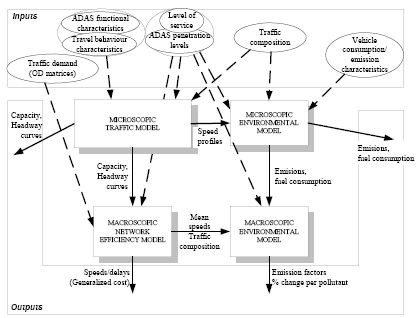
The objective of this paper is to present a methodology for the estimation of the impact of Advanced Driver Assistance Systems (ADAS) on network efficiency and the environment. The methodology proposes a set of traffic and emissions simulation models, both microscopic and macroscopic. Issues relevant to the models are discussed, and the inputs to the methodology are presented, along with its expected outputs. An indicative application of the methodology is performed, where the traffic impact of the Adaptive Cruise Control (ACC) system is tested in an urban network. The simulation results indicate that the impact of the introduction of Adaptive Cruise Control can be significant in the improvement of the traffic parameters for high system penetration levels and peak period traffic conditions.
| ID | pj14 |
| Manuscript | |
| DOI | |
| Tags | driver behaviour, intelligent systems, traffic management, vehicle |







